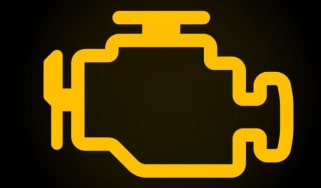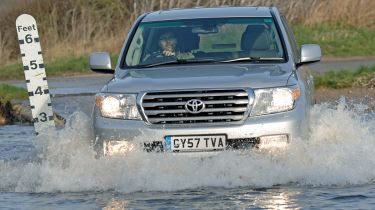Driving in floods: top tips
When there's a lot of wet weather about, stay safe in flooded conditions with this guide
Torrential rain can cause catastrophe and devastation for a lot people, but it also leads to havoc on the roads. Driving on flooded roads and in heavy rain can be dangerous, so it’s important to be safe and be sensible.
Driving through floods can be very risky, as it’s not always clear how deep the water is. If it’s too deep for your car, you could end up getting stuck and putting not only your car at risk, but also your life and other people’s.
Above anything else, our advice is to avoid driving in flood-hit areas altogether, much like our advice to only go out in the car if you absolutely have to when it’s snowy or icy on the roads. If you have no option but to use the car, our tips can help you avoid becoming one of the many victims hit by severe weather each year.
Before you get in the car
There are simple checks to make even before you get in the car. If stormy or rainy conditions are forecast, make sure your wipers are up to the job, because you’ll be incredibly reliant on them performing well when you’re driving. Ensure the rear wiper is just as good, too.
It might seem like obvious advice, but try to park your car out of the way of a potential flood area. Things could get expensive if it’s ends up partially or completely submerged.
Also, check where there are flood warnings before you hit the road. If you can avoid a potential problem altogether, your journey should be hassle-free.
Be aware, be sensible, be safe
It’s likely weather conditions will be less than favourable, so make sure you use your lights to boost visibility for both yourself and other drivers.
Leave a greater distance than normal between you and the car in front. Stopping distances increase in the wet, so take more care if it’s raining. Don’t drive too fast, either. Hitting a bit of standing water at speed can cause your car to aquaplane. This occurs when your tyres lose contact with the road and causes the steering to go light. If this happens, ease off the power so you can regain control again.
If you come to some deeper water, stop and assess whether or not you’ll be able to get through it safely. Don’t plough straight through if there’s somebody coming the other way or if you don’t know how deep it is. You could be fined if you splash cyclists or pedestrians by driving too quickly through puddles or floods.
Allow oncoming traffic to pass first, and proceed slowly through floodwater. The AA recommends you don’t attempt to drive through water that’s more than 10cm deep, and remember that the water could get deeper halfway through – you can’t see this from further away.
If you can avoid the water altogether by taking a different route, do so. Your journey might take longer, but it could save you from the worst. Our advice would be to find an alternative route and plan to leave a little earlier to make up for the longer journey.
How to drive through floods
If the water is shallow and safe enough to cross, you must still be careful while doing so. Go through the shallowest part of the water when there’s no oncoming traffic and stay in first gear, maintaining a constant speed and revs if you can. This will help prevent water getting into you car’s exhaust pipe.
Avoid stopping in the middle of a flood – this could cause you to break down and get stuck. Once you’re through the water, test your brakes when it’s safe to do so. This will clear any excess water that could prevent them from working properly - stopping distances are greatly affected in the wet.
One of the key things to avoid is driving quickly through floods – do this and you risk losing control of the car. Tyres lose grip in standing water and the steering becomes light. If this happens, ease off the power and don’t apply the brakes. Let the car correct itself while the tyres regain grip.
If you find yourself at a flood with fast-moving water or a ford, avoid going through if you can. Water currents are stronger than you might think, and driving through could cause you to lose control of your car, get stuck or be swept away.
If you splash nearby pedestrians or cyclists, this not only spoils their day, but can also leave you liable to a hefty fine or points on your licence. If the police catch you doing this and believe you were driving without consideration for others, you could be prosecuted.
The worst-case scenario
If the worst happens and you break down in a flood, don’t panic. Do not attempt to restart your car, as this could cause even more damage. Instead, leave the bonnet closed to avoid any further water damage and call for assistance. Get out of the car and get to the side of the road if you can, remembering to lock the doors. And make sure you turn your hazard warning lights on so other drivers can see your car easily.
If your car doesn’t feel right after driving through a flood, get it checked by a mechanic to give it the all clear.
Over and above anything else, the same rules apply to driving in floods as for wintry conditions. Take extra caution when the roads are wet and be sensible.
See our guide on driving in winter here, or see which breakdown companies were ranked the best in 2019.
Most Popular

Engine management light: top 5 causes of amber engine warning light

Best new car deals 2024: this week’s top car offers

Mega Mazda! All-new Mazda CX-80 is a flagship 7-seater SUV
Tips & advice









